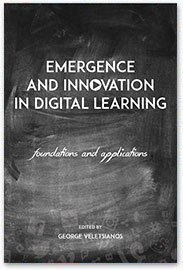Bear with me. This work-in-progress is a bit raw. I’d love any feedback that you might have.
Back in 2008, my colleagues and I wrote a short paper arguing that social justice is a core element of good instructional design. Good designs were, and still are, predominantly judged upon their effectiveness, efficiency, and engagement (e3 instruction). Critical and anti-opressive educators and theorists have laid the foundations of extending educational practice beyond effectiveness a long time ago.
I’m not convinced that edtech, learning design, instructional design, digital learning, or any other label that one wants to apply to the “practice of improving digital teaching and learning” is there yet.
I’ve been thinking more and more about compassion with respect to digital learning. More specifically, I’ve been reflecting on the following question:
What does compassion look like in digital learning contexts?
I’m blogging about this now, because my paper journal is limiting and there is an increasing recognition within various circles in the field that are coalescing around similar themes. For instance,
- The CFP for Learning with MOOCs III asks: What does it mean to be human in the digital age?
- Our research questions reductionist agendas embedded in some approaches to evaluating and enhancing learning online. Similar arguments are made by Jen Ross, Amy Collier, and Jon Becker.
- Kate Bowles says “we have a capacity to listen to each other, and to honour what is particular in the experience of another person.”
- Lumen Learning’s personalized pathways recognize learner agency (as opposed to dominant personalization paradigms that focus on system control)
Compassion is one commonality that these initiatives, calls to action, and observations have in common (and, empowerment, but that’s a different post).
This is not a call for teaching compassion or empathy to the learner. That’s a different topic. I’m more concerned here with how to embed compassion in our practice – in our teaching, in our learning design processes, the technologies that we create, in the research methods that we use. At this point I have a lot of questions and some answers. Some of my questions are:
- What does compassionate digital pedagogy look like?
- What are the theories of learning that underpin compassionate practice?
- What does a pedagogy of care look like? [Noddings’s work is seminal here. Some thoughts from a talk I gave. thoughts from Lee Skallerup Bessette and a paper describing how caring is experienced in online learning contexts.]
- What are the purported and actual relationships between compassion and various innovations such as flexible learning environments, competency-based learning, and open education?
- What are the narratives surrounding innovations [The work of Neil Selwyn, Audrey Watters, and David Noble is helpful here]
- What does compassionate technology look like?
- Can technologies express empathy and sympathy? Do students perceive technologies expressing empathy? [Relevant to this: research on pedagogical agents, chatbots, and affective computing]
- What does compassion look like in the design of algorithms for new technologies?
- What does compassionate learning design look like?
- Does a commitment to anti-oppressive education lead to compassionate design?
- Are there any learning design models that explicitly account for compassion and care? Is that perhaps implicit in the general aim to improve learning & teaching?
- In what ways is compassion embedded in design thinking?
- What do compassionate digital learning research methods look like?
- What are their aims and goals?
- Does this question even make sense? Does this question have to do with the paradigm or does it have to do with the perspective employed in the research? Arguing that research methods informed by critical theory are compassionate is easy. Can positivist research methods be compassionate? Researchers may have compassionate goals and use positivist approaches (e.g., “I want to evaluate the efficacy of testing regimes because I believe that they might be harmful to students”).
- What does compassionate digital learning advocacy look like?
- Advocating for widespread adoption of tools/practices/etc without addressing social, political, economic, and cultural contexts is potentially harmful (e.g., Social media might be beneficial but advocating for everyone to use social media ignores the fact that certain populations may face more risks when doing so)
There’s many other topics here (e.g., adjunctification, pedagogies of hope, public scholarship, commercialization….) but there’s more than enough in this post alone!

 Athabasca University Press has just published
Athabasca University Press has just published